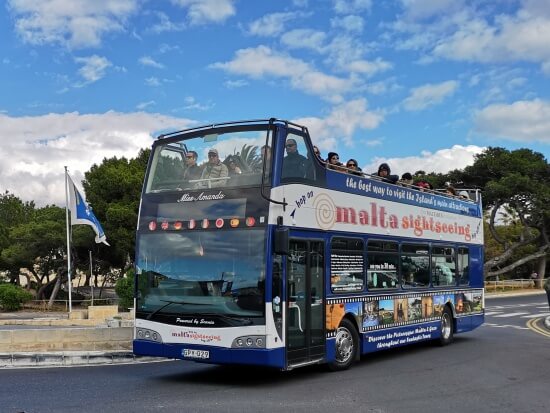In 1905, the first buses came to Malta from England. The company responsible for this was called ‘the Malta Motor Omnibus and Transport Syndicate’. The buses were intended as a scheduled service between Valletta and St. Julians Maltese cities.
The nostalgic value of these buses was very high, and the buses were very popular with tourists. The buses could be called antique, and it is fantastic that they lasted all these years because, in 2011, these buses were still running in Malta. However, these diesel vehicles were not good for the environment, and sometimes, tourists fell out. Therefore, you could not call them safe either.
The buses were/are needed in Malta because many villages are remote. But the diesel fumes these buses produced were a big nuisance to Maltese people. The actual original Maltese buses are the ones that ran in Malta in the 50s and 60s. Some buses were made in Malta, but most came from the UK.
The colors of these buses ranged from green to orange, and on the sister island of Gozo, they were gray and had a horizontal red stripe. In Malta, they did not only run to and from Valletta; some buses also made round trips around the islands to connect villages.
History of transport in Malta
Before there were buses, there was a train in Malta. This ran from Mdina to Rabat. There were also horse-drawn carts and cabs. With the advent of buses, the railroad fell into disuse and disappeared around 1920. By 1930, the island had 385 buses, most of which were owned by drivers. An accurate timetable did not come until 1931, and stricter regulations were introduced. It all began to look like the Maltese government owned the buses. A tradition among the drivers was to decorate and colorfully paint the buses. Occasionally, the buses had different colors depending on the bus route. There was a time when, as a tourist, you could travel by bus all day for less than three euros. People predicted a reform of the bus system in 2011.
Arriva
In 2011, the Arriva bus was introduced in Malta. Buses that were much more environmentally friendly than the old traditional diesel buses. The arrival of Arriva was also a relief for the disabled. Public transport was suddenly a lot more efficient. With the introduction of the Arriva bus, the government hoped to solve the traffic problem in Malta. It never did, and the Arriva buses were not the most convenient in Malta. They were far too large buses that traveled tortuously down narrow streets. The management of these buses was now in the hands of the Malta Public Transport company in 2013. With the arrival of this company, the old traditional buses also disappeared. These traditional buses are still very occasionally used for special occasions or excursions. Eventually, a Spanish company took over Malta Public Transport, but the name always remained the same. Furthermore, the big, long buses have disappeared from the streets and have been replaced by white-green buses with the Malta Public Transport logo.
Tallinja
You can buy transport cards to travel on Malta Transport’s Maltese buses. These are contactless cards that allow you to use the bus quickly. The locals have a personalized transport card with a photo and name that you can top up, just like a phone credit. With this card, you have cheaper fares than if you pay with cash on the bus. In the summer, there is also Tallinja direct on Malta. Tallinja direct is a unique service where you can use a card to travel for a week. Remember that the buses are often stuck in traffic and the transfer times are not always the times the bus always indicates. It can be a pretty hot and long ride if you get caught up in the hustle and bustle of Maltese traffic.
Hop on, Hop off
Choosing a double-decker bus that shows you the islands on different routes is easier. For example, we know the Blue and the Red Malta Sightseeing Routes in Malta. In two days, you can inexpensively explore the whole island. All you have to do is get off the bus at the sight you want to see and make sure you find the next bus to get back on at the same place. These routes take three hours while you sit comfortably on top of the bus. A unique experience!

